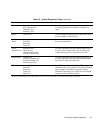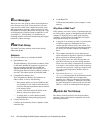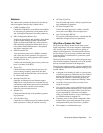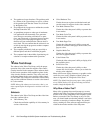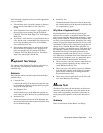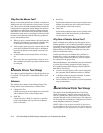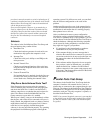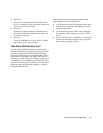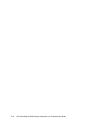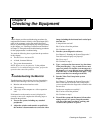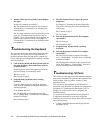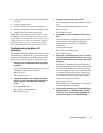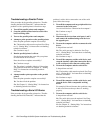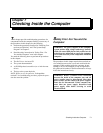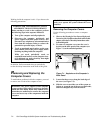
Running the System Diagnostics 5-17
•
Read Test
Positions the read/write heads at each block of the
device for reading data and verifies that all tracks on
the device can be read correctly.
•
Write Test
Positions the read/write heads at each block of the
device and verifies that all tracks on the device can
be written to correctly.
•
Eject Test
Causes a CD-ROM drive to eject its CD or a SCSI
tape drive to eject its tape cartridge.
Why Run a SCSI Devices Test?
If you check the SCSI hard-disk drive to determine the
amount of available space, the operating system will prob-
ably report problem areas. Problem areas on hard-disk
drives are common because most hard-disk drives have a
small amount of space that is not usable. The hard-disk
drive keeps a record of this space so that the computer will
not attempt to use it. Identification of unusable disk space,
unless it is an unusually large amount (over five percent of
the possible total), should not be regarded as a cause for
testing the hard-disk drive.
The following are the most common symptoms that
might prompt you to test a SCSI device:
•
A SCSI hard-disk drive fails during the boot routine.
•
Seek errors are reported by the operating system or
application programs.
•
An error message appears on the screen stating that
the computer cannot read from or write to a SCSI
device.
•
Data on a SCSI device is corrupted or lost; this prob-
lem may be intermittent. Once saved by a program,
files cannot be properly recalled.



